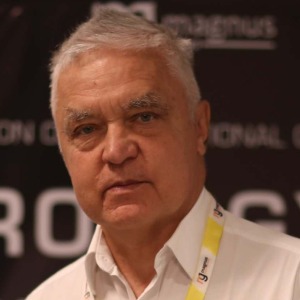Motor Disorders
A motor disorder is defined as a neurological impairment or disorder in the areas of movement, posture, coordination or balance. These motor disturbances can range from mild problems in motor coordination, or immobility, to more severe impairments in motion control and movement coordination. Motor disorders are the largest group of diseases in the neurological field. The most common types of motor disorders are Parkinson’s disease, multiple sclerosis, stroke, muscular dystrophy, cerebral palsy and spasticity. Each of these conditions can affect movement in varying degrees. Parkinson’s disease is a neurological disorder characterized by tremors, slowness in movement and difficulty in initiating and coordinating movements. People with Parkinson’s disease may also experience rigidity, postural instability, akinesia or an inability to move, and dementia. People with Parkinson’s disease may also have difficulties with balance and coordination, and may experience intermittent gait instability. Multiple sclerosis is an autoimmune disorder in which the immune system attacks the central nervous system. It causes a wide range of symptoms including paralysis, visual disturbances, cognitive decline, and muscle spasms. People with multiple sclerosis can also experience difficulties with mobility and balance. Stroke is a condition caused by a lack of blood flow to the brain. People with stroke may experience weakness or paralysis in one or more limbs, impaired speech, vision changes, and difficulty with balance and coordination. Muscular dystrophy is a group of muscle diseases characterized by progressive weakness, atrophy and disorder of the voluntary muscles. People with muscular dystrophy may experience problems with mobility, balance, and coordination. Cerebral palsy is a group of disorders of movement and posture caused by damage to the central nervous system. People with cerebral palsy have limited mobility and coordination due to muscle weakness, spasticity, postural instability, and poor coordination. Spasticity is a condition characterized by muscular stiffness and an increase in muscle tone due to impaired motor control. Spasticity can make it difficult for people to control the movements of their limbs and body. Motor disorders can be debilitating and affect a person’s ability to carry out everyday activities.

Ken Ware
NeuroPhysics Therapy Institute, Australia
Robert B Slocum
University of Kentucky HealthCare, United States
Yong Xiao Wang
Albany Medical College, United States
W S El Masri
Keele University, United Kingdom
Jaqueline Tuppen
COGS Club, United Kingdom
Milton Cesar Rodrigues Medeiros
Hospital Santa Casa de Arapongas, Brazil




Title : Perception and individuality in patient cases identifying the ongoing evolution of Myalgic Encephalomyelitis/Chronic Fatigue Syndrome (ME/CFS)
Ken Ware, NeuroPhysics Therapy Institute, Australia
Title : Narrative medicine: A communication therapy for the communication disorder of Functional Seizures (FS) [also known as Psychogenic Non-Epileptic Seizures (PNES)]
Robert B Slocum, University of Kentucky HealthCare, United States
Title : Rabies: Challenges in taming the beast
Alan C Jackson, University of Calgary, Canada
Title : Neuro sensorium
Luiz Moutinho, University of Suffolk, United Kingdom
Title : Traumatic Spinal Cord Injuries (tSCI) - Are the radiologically based “advances” in the management of the injured spine evidence-based?
W S El Masri, Keele University, United Kingdom
Title : Personalized and Precision Medicine (PPM), as a unique healthcare model through biodesign-driven biotech and biopharma, translational applications, and neurology-related biomarketing to secure human healthcare and biosafety
Sergey Victorovich Suchkov, N.D. Zelinskii Institute for Organic Chemistry of the Russian Academy of Sciences, Russian Federation